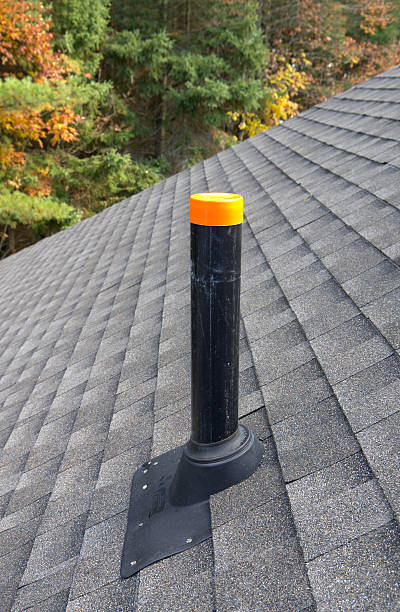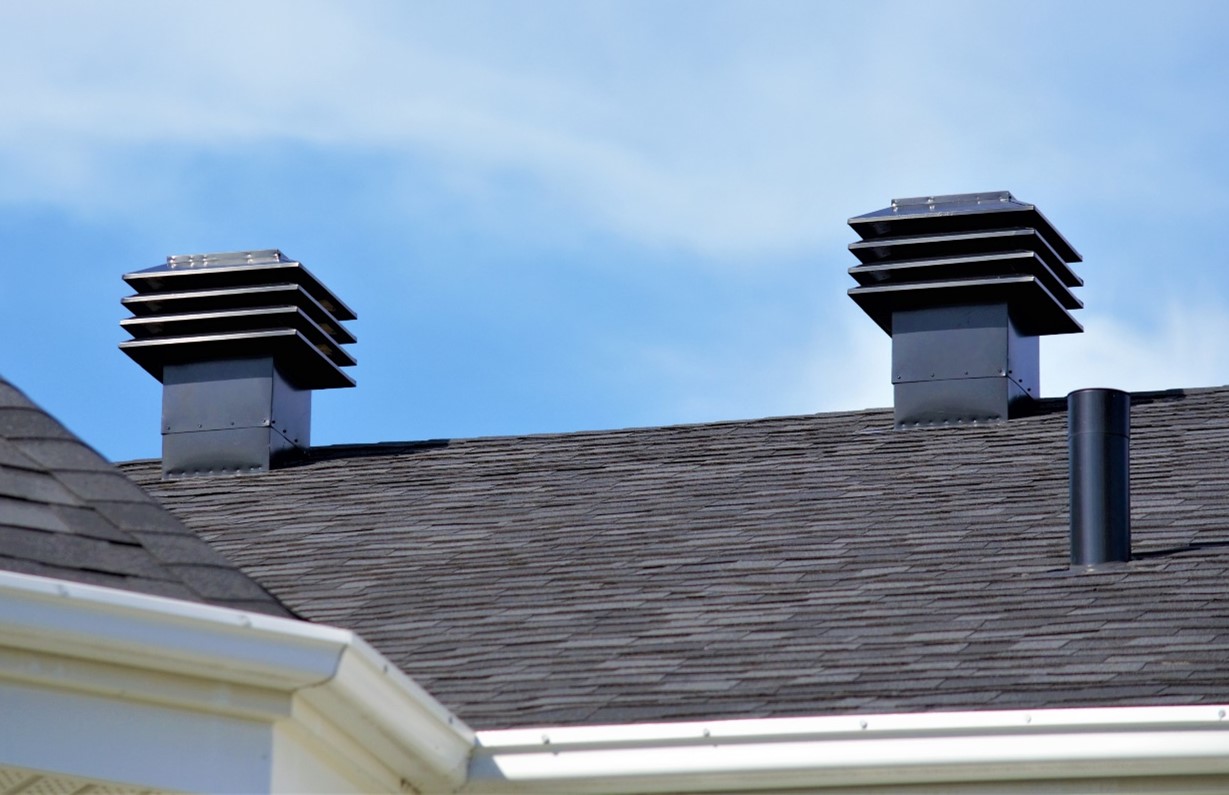Grasping The Value of Correct Ventilation in Plumbing Systems
Grasping The Value of Correct Ventilation in Plumbing Systems
Blog Article
What are your thoughts on What Are Plumbing Vents and Why Are They Important??

Correct air flow in pipes systems is frequently neglected, yet it is essential for maintaining the performance and safety of your home's pipes. Ventilation aids manage air pressure, protect against the build-up of unsafe gases, and make certain the reliable removal of waste. In this overview, we will explore the importance of proper pipes ventilation, just how it works, and the benefits it gives your plumbing system.
Comprehending Air Flow in Pipes
Air flow in plumbing refers to the network of pipes that allow air to flow through the drainage system. These vents offer numerous objectives, consisting of controling air pressure within the pipes, avoiding sewer gases from getting in the home, and helping in the smooth flow of wastewater.
Just How Air Flow Works in Pipes Solutions
Air Pressure Regulation
Proper ventilation maintains well balanced atmospheric pressure within the pipes system. When water flows via pipelines, it displaces air. Without appropriate air flow, this variation can produce unfavorable stress, resulting in slow drains or siphoning of water from traps, which can cause undesirable smells to seep into the home.
Protecting Against Sewage System Gas Buildup
One of the most vital functions of plumbing vents is to avoid sewer gases, such as methane and hydrogen sulfide, from accumulating within the home. These gases can present significant wellness risks and are very flammable. Vent pipelines allow these gases to get away securely outside.
Aiding in Waste Removal
Ventilation assists in the efficient elimination of wastewater by avoiding airlocks in the drainage system. When air can stream easily with the vents, it permits water and waste to move smoothly with the pipes, decreasing the danger of blockages and back-ups.
Types of Pipes Vents
Main Heap Vent
The major stack vent, also known as the vent stack, is the main air vent in a pipes system. It extends from the major drain align through the roof covering, enabling gases to run away and fresh air to enter the system.
Branch Vent
Branch vents connect to the major pile air vent and serve individual fixtures, such as sinks, toilets, and showers. These vents make sure that each component has ample air flow to function appropriately.
Air Admission Shutoff (AAV).
An Air Admission Shutoff (AAV) is a one-way shutoff that permits air to get in the pipes system without the demand for a conventional vent pipe extending through the roof. AAVs are commonly used in remodellings or areas where installing a standard air vent is unwise.
Signs of Poor Ventilation in Plumbing.
Slow Draining Fixtures.
If your sinks, bathtubs, or bathrooms are draining gradually, maybe an indication of poor ventilation. Poor air flow can create a vacuum cleaner result, making it hard for water to drain pipes effectively.
Gurgling Appears.
Gurgling audios originating from drains pipes are frequently an outcome of air being drawn with water traps because of unfavorable pressure in the pipelines. This is a clear sign of not enough air flow.
Unpleasant Smells.
Drain smells inside your home are a warning that your pipes system is not effectively aerated. This could mean that drain gases are not being sufficiently aired vent outside, resulting in possibly hazardous conditions.
Common Ventilation Errors.
Insufficient Vent Sizing.
Utilizing undersized vent pipelines can lead to bad air circulation and stress inequalities in the system. It's important to utilize vents that fulfill the particular requirements of your pipes system.
Improper Vent Placement.
Putting vents as well much from the fixtures they offer can minimize their performance. Appropriate positioning ensures that air can flow openly and effectively via the system.
Ignoring Code Demands.
Building codes provide particular guidelines for pipes air flow. Overlooking these codes can lead to a system that falls short to function properly and might lead to expensive fixings or health hazards.
Advantages of Correct Air Flow.
Boosted System Effectiveness.
Effectively aerated plumbing systems run more effectively, with fewer blockages, faster draining pipes, and much less stress on the pipelines. This effectiveness prolongs the life expectancy of the pipes system.
Improved Air High Quality.
By stopping drain gases from entering your home, appropriate ventilation contributes to far better interior air high quality, making your living atmosphere healthier and a lot more comfy.
Avoiding Water Damages.
Ample ventilation aids avoid water from being siphoned out of traps, which can cause sewage system gases entering the home and creating water damage gradually.
Actions to Make Sure Correct Ventilation.
Consulting Pipes Codes.
Always speak with local pipes codes when creating or customizing your pipes system. These codes supply the necessary guidelines for appropriate venting and ensure your system fulfills security criteria.
Regular Evaluation and Upkeep.
Normal inspections can help identify potential ventilation issues before they become major problems. Upkeep jobs, such as cleansing air vent pipelines and checking for blockages, are important for maintaining the system in good working order.
Specialist Setup.
For new setups or major alterations, it's smart to employ a professional plumbing technician. They have the expertise to ensure the air flow system is correctly created and installed according to code.
Conclusion.
Correct air flow is an important component of any kind of plumbing system, ensuring that it operates efficiently and securely. By recognizing the value of ventilation, identifying the indicators of poor ventilation, and taking actions to maintain your system, you can prevent expensive problems and secure your home's air high quality.
Understanding the Role of Your Plumbing Vents in the Drainage System
The plumbing system in your home is more than just the kitchen sink, toilet, and bathroom. Some problems that arise within home plumbing are hard to detect because homeowners may not understand potential causes.
One part of the plumbing system that could cause you endless problems is the venting. The drain lines that run through your home and drain wastewater need proper venting to function properly. Faulty plumbing vents can lead to several problems that require the expertise of a plumber to check them out. Before finding experienced plumbing services, there are a few things to learn about plumbing vents.
Why vents are vital
Vents in the plumbing system lead to an outside area such as the roof or the back. The function of these vents is to keep sewer gases away from the drain pipes. They also establish seals in the drainage pipes that prevent the sucking back of waste gases into the home. Venting in the plumbing system also allows oxygen to get into the drainage system, which is an essential component in the breakdown of waste matter. The vents also ensure that the air pressure within the drainage system remains balanced, facilitating the flow of wastewater.
Possible problems
When the plumbing vents are problematic, one of the consequences is imbalanced water levels in the toilet. If you notice that the levels in the toilet bowl rise and fall all the time, then there may be something wrong with the vents.
Another issue is air bubble formation within the toilet. In most cases like these, the drain pipes are not receiving enough air. Lack of air pressure equalization is what leads to water flow problems. If you come across such issues in your home, make sure you call professional plumbers, such as the ones from Perfection Plumbing & Drain Cleaning Ltd.
Potential causes
Several scenarios can lead to some of the plumbing problems that homeowners suffer because of venting. One such scenario is the use of incorrectly sized vents. Usually, vents are the same size as the drain line to facilitate proper venting. Vents that are too small will lead to some plumbing issues. Another potential cause is fixtures that are not close enough to the vents. In this scenario, air forces itself through the traps of other fixtures, leading to gurgling sounds from toilets and sinks.
Most of these problems also happen with clogged vents. Tree leaves and debris can cause clogging when they make their way down a vent. Unclogging plumbing vents is a service that you can entrust to Saskatoon plumbers. They will know how to snake down vents and remove clogging stuck in fixtures.

I stumbled upon that content about while doing research the web. Do you know about another person who is intrigued by the topic? Feel free to promote it. Thanks a lot for taking the time to read it.
Visit Our Website Report this page